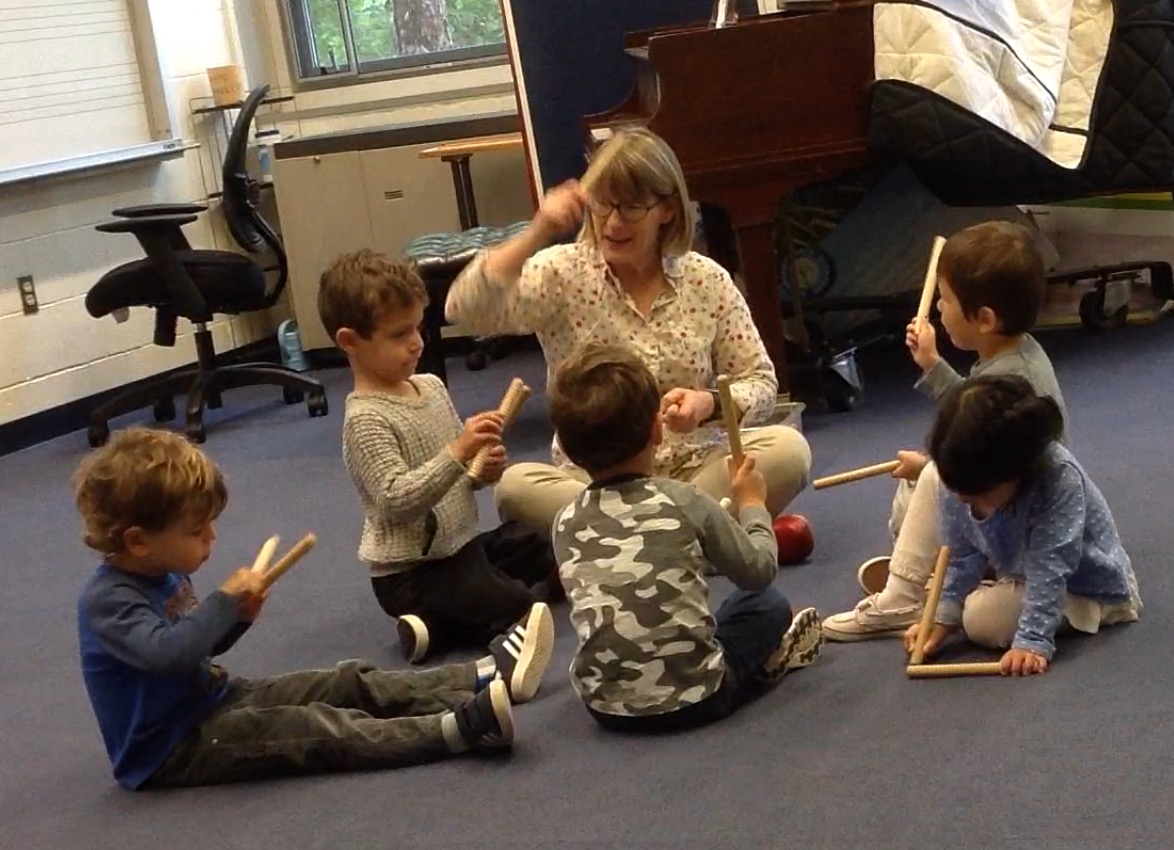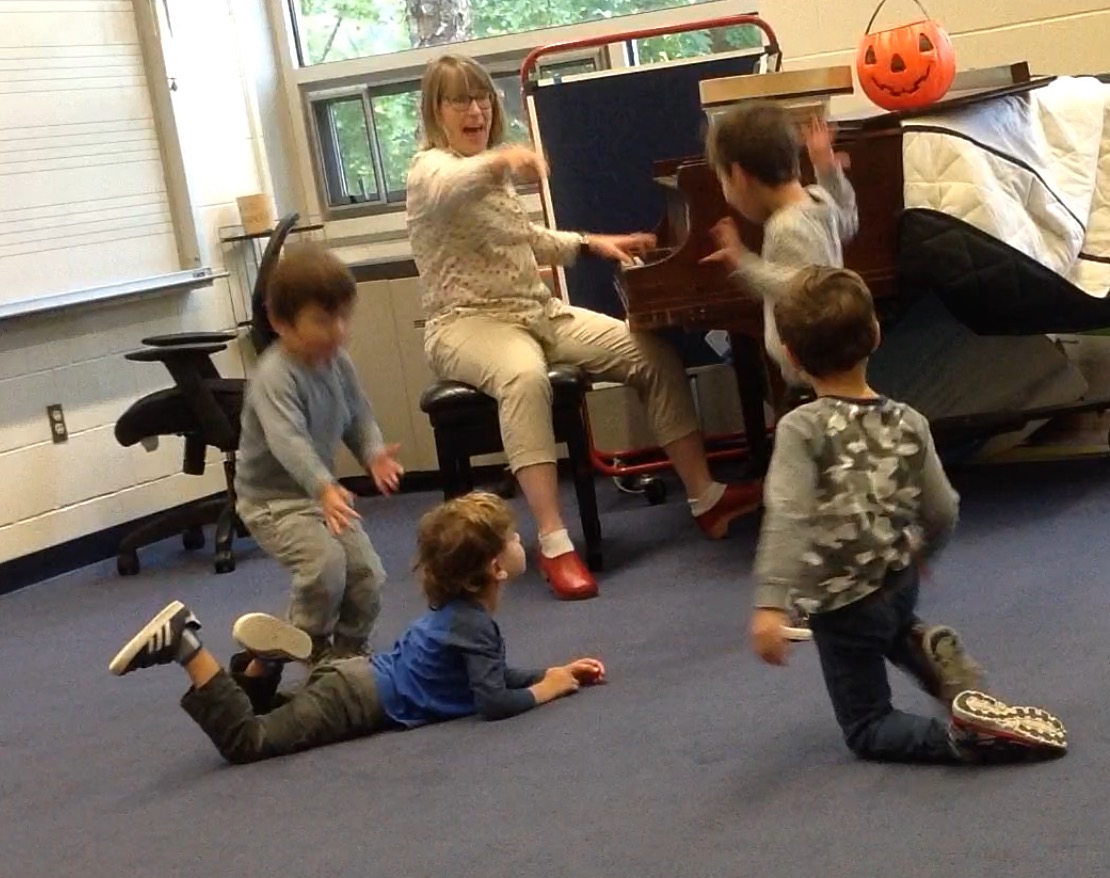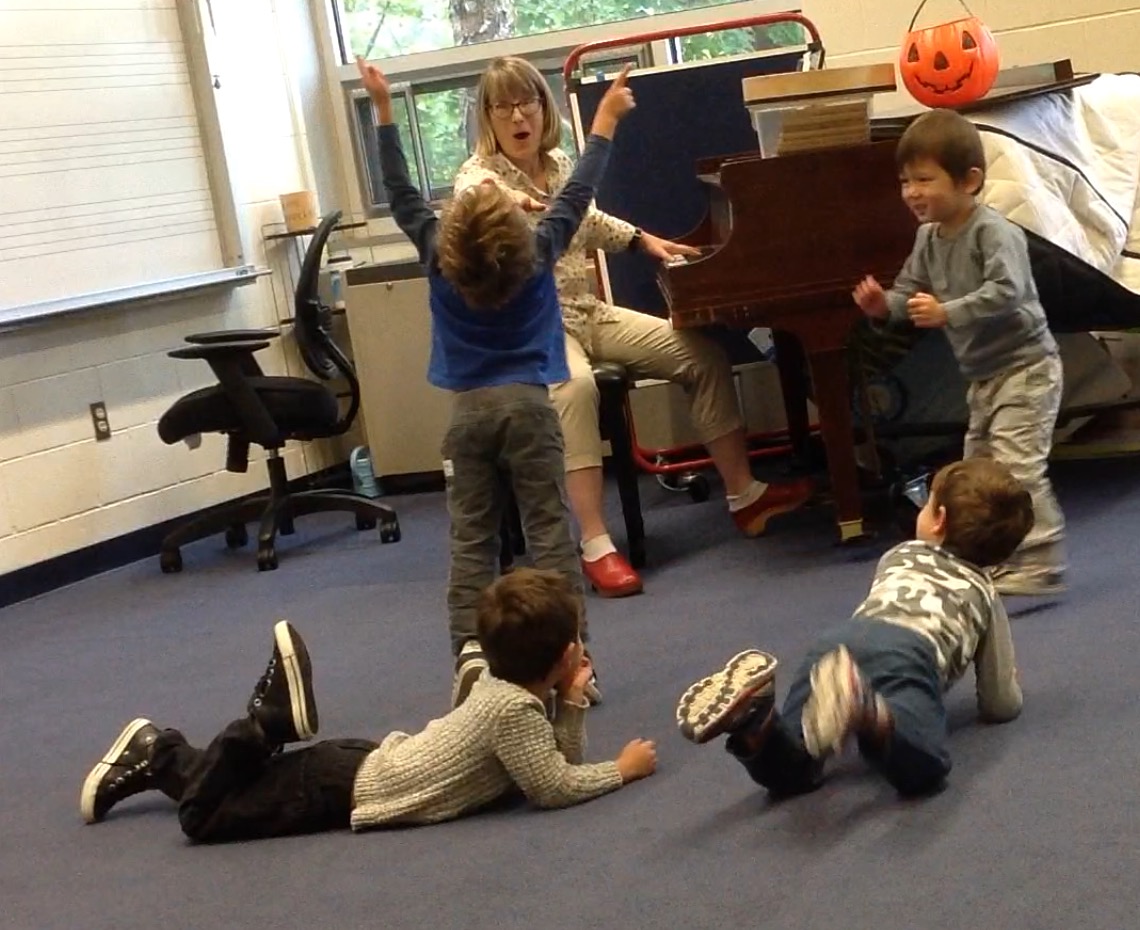submitted by Lisa Dove
Enter the music room during an early childhood class, and you may spy giants tromping through the woods, or perhaps you might get caught up in a herd of galloping horses or unicorns. Then again, you may come upon a village of prancing elves or a field of floating butterflies. The world of the Lower School music room is limited only by the imaginations of its students – which means, for students in preschool 3, preschool 4 and kindergarten, that it is limitless!
One may wonder why imaginative stories and pretend are the focus in the early childhood music classes. For D-E’s youngest learners, pretending is an immediate entry point to exploring different ways of moving their bodies in space – heavy and slow, light and quick, smooth and sustained. The body is a child’s first instrument.
Clapping, singing, tapping out a rhythm, dancing with a scarf, galloping a ternary time signature, are all ways a child uses the body to express music and musical movement. As children gain mastery over these physical responses, they develop a strong sense of rhythm and a greater sensitivity to musical nuances. All of this is foundational for future music study, as well as for fostering a life-long joy with music.
Families – don’t be surprised if a piece of music suddenly brings out a giant, an elf or a floating leaf; you may have a future composer in your home!






